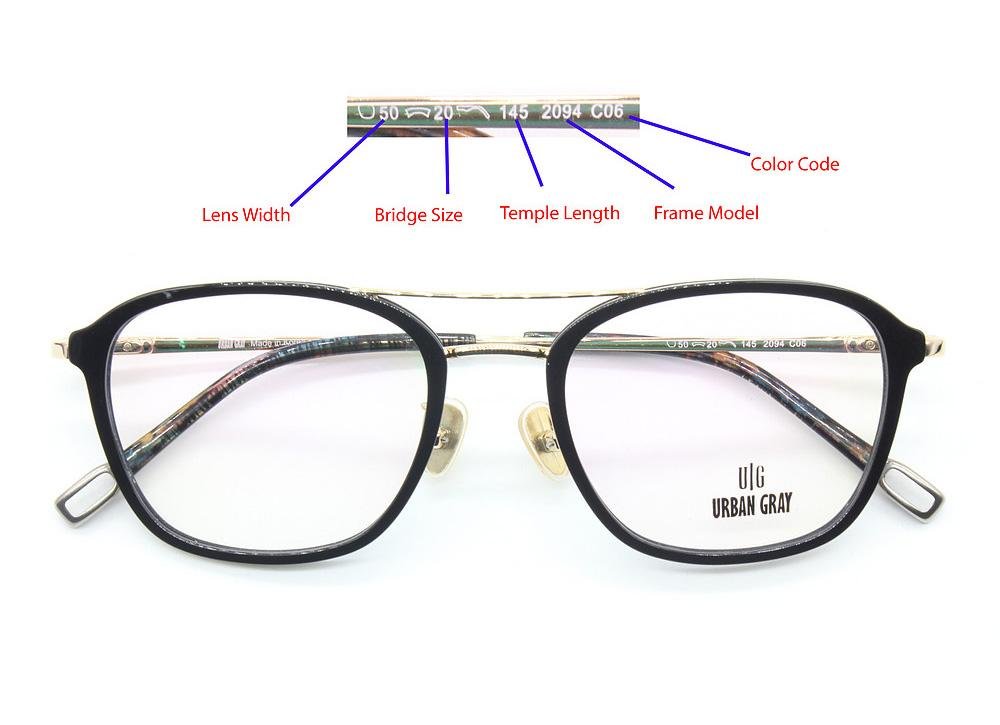Lens Width
Lens width is the width of a lens, measured in millimeters, from one side of a lens to the other side of that lens. This is the most important measurement to make sure the frame fits your eyes.
Frame Width
To really know how big a frame is, and how it will look on your face, you have to determine the width of the entire frame. The outer width of the frame is the distance between the visible areas on the left and right sides of the frame, namely, the distance between the frame and the junction of the two temples. The inner width of the frame is the distance between the inner sides of the two temples at 60mm behind the plane of the lens. This is just the contact point between the temple and the human temple. If it is too tight or too loose, it will affect the wearing comfort. The weight of the frame is evenly distributed across the bridge of the nose (or evenly distributed between the two nose pads on the bridge of the nose).
Bridge Width
The bridge width is the distance between two lenses, measured from the innermost layer of each lens. Finding the right bridge width will allow your sunglasses or glasses to be put properly on the bridge of your nose. The bridge of the nose is an essential element because even though the frame looks pretty attractive, it helps people see more clearly. The precise distance between the two lenses helps reduce the pressure on the eye, helping the nose, without putting too much pressure on the inside of the eye. The size of the eye and the size of the bridge is usually adjacent, sometimes separated by a square icon.
Lens Height
Lens height is the length between the top edge of a lens and the bottom edge of that lens. Lens height is the distance between the lowest point of the lens and the top of the frame above it. This number may be influenced by the style of your glasses.
Temple Length
The length of the temple is the length of the arm of your glasses. It's how far the arm is bent, all the way to where it intersects the frame. Although lengths may range from 120 to 150 mm, there are some common industry standards:135, 140, 145, and 150 mm. The temples are long enough to extend beyond your ears, so the ends can be changed to match the contours of your head behind your ears.





































